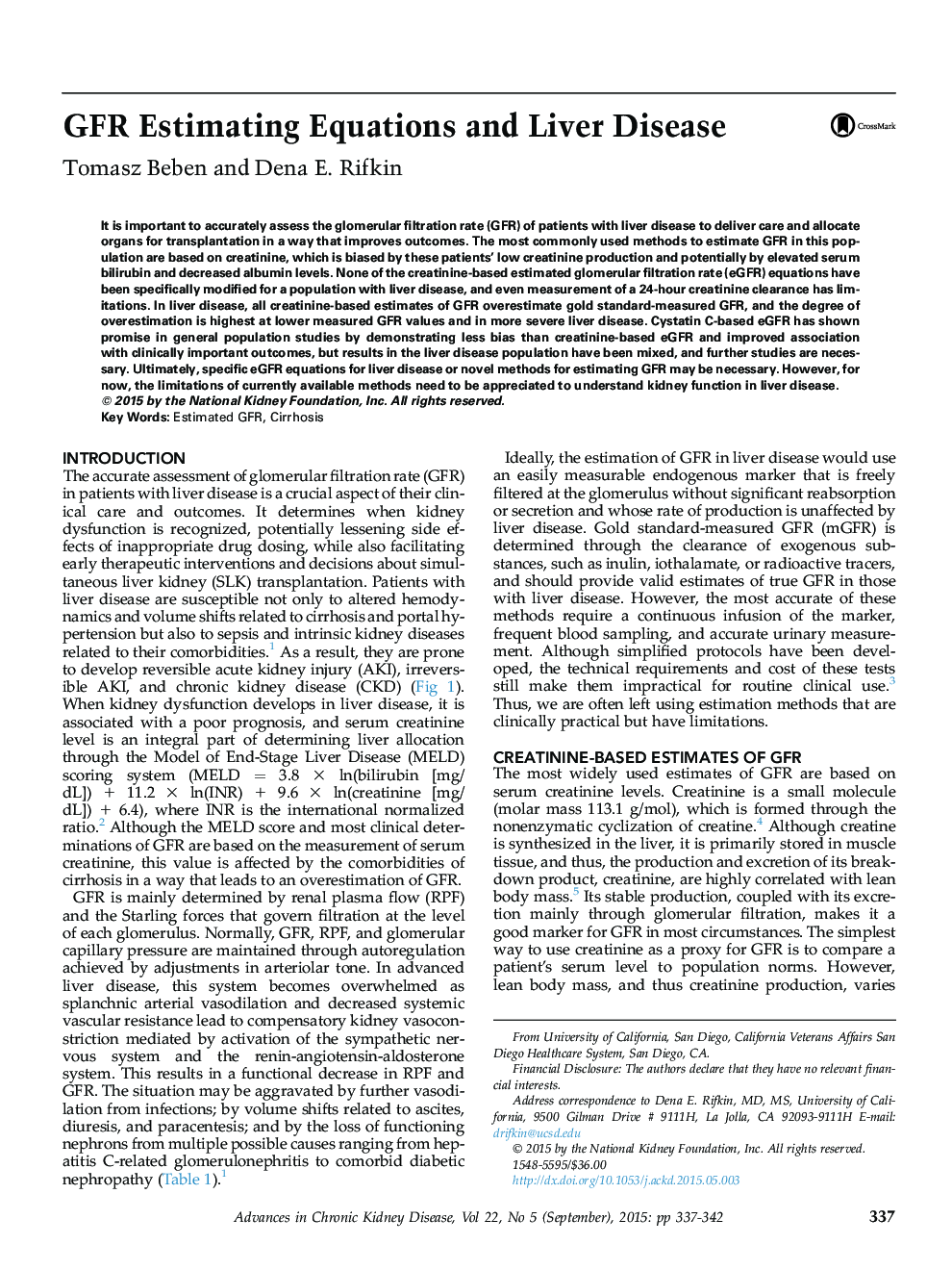| Article ID | Journal | Published Year | Pages | File Type |
|---|---|---|---|---|
| 3846302 | Advances in Chronic Kidney Disease | 2015 | 6 Pages |
Abstract
It is important to accurately assess the glomerular filtration rate (GFR) of patients with liver disease to deliver care and allocate organs for transplantation in a way that improves outcomes. The most commonly used methods to estimate GFR in this population are based on creatinine, which is biased by these patients' low creatinine production and potentially by elevated serum bilirubin and decreased albumin levels. None of the creatinine-based estimated glomerular filtration rate (eGFR) equations have been specifically modified for a population with liver disease, and even measurement of a 24-hour creatinine clearance has limitations. In liver disease, all creatinine-based estimates of GFR overestimate gold standard-measured GFR, and the degree of overestimation is highest at lower measured GFR values and in more severe liver disease. Cystatin C-based eGFR has shown promise in general population studies by demonstrating less bias than creatinine-based eGFR and improved association with clinically important outcomes, but results in the liver disease population have been mixed, and further studies are necessary. Ultimately, specific eGFR equations for liver disease or novel methods for estimating GFR may be necessary. However, for now, the limitations of currently available methods need to be appreciated to understand kidney function in liver disease.
Keywords
Related Topics
Health Sciences
Medicine and Dentistry
Nephrology
Authors
Tomasz Beben, Dena E. Rifkin,
